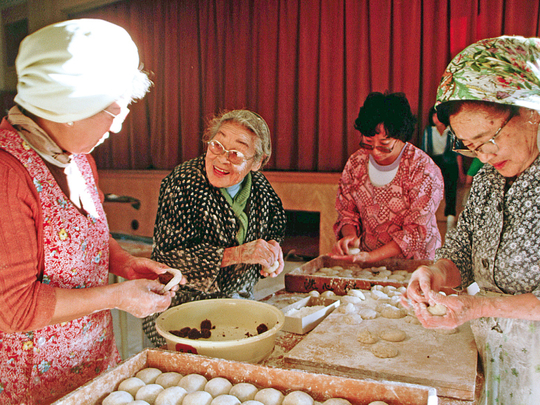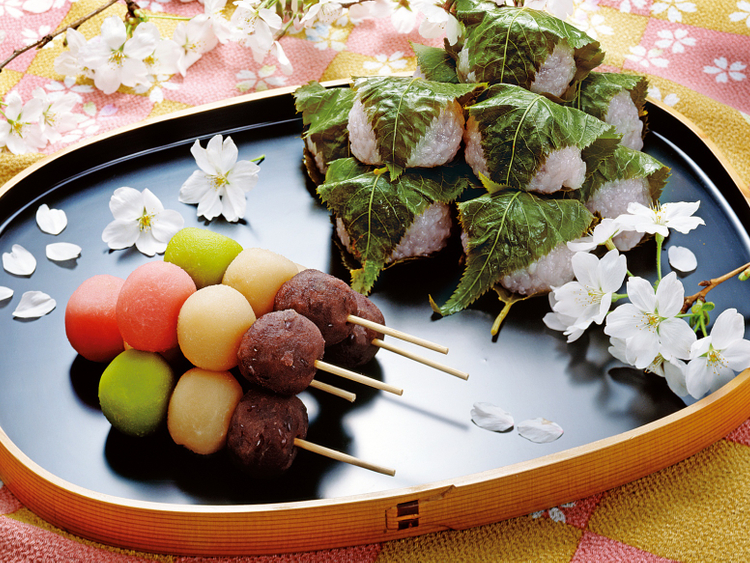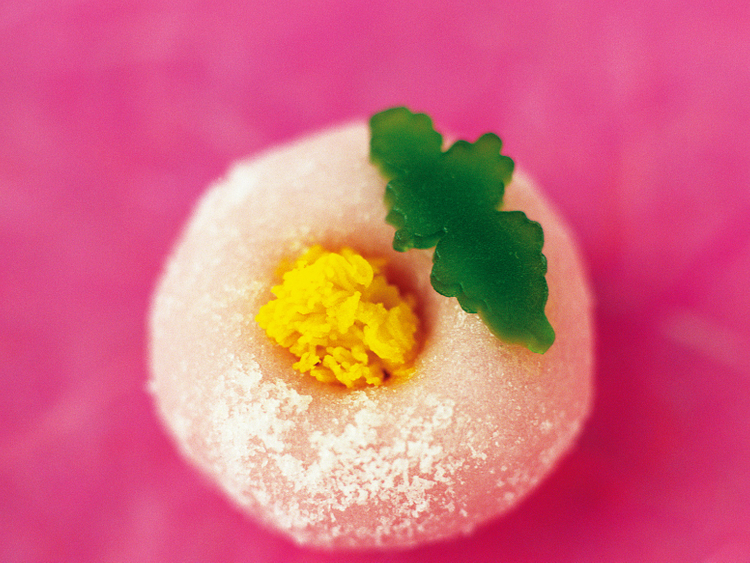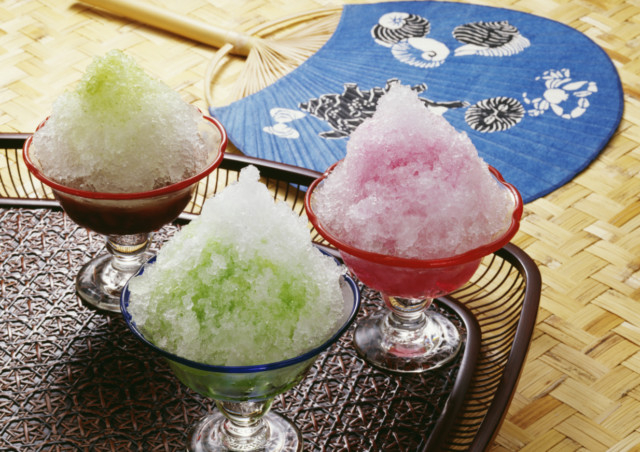
Modern Japanese sweets evoke extremely polarised opinions. You can either love or loathe green tea milk chocolate bars, octopus-flavoured ice cream, dried squid coated in milk chocolate or chewing gums that claim to enhance your figure. Supermarket shelves teeming with these imaginative — sometimes hit-and-miss — concoctions prove that the Japanese are not afraid to experiment with their food. But do they only eat the quirky, strange desserts made so popular by the world wide web?
The answer is, of course, no.
There are more restaurants in Japan with three Michelin stars than Italy and Germany put together. French Restaurateur Joël Robuchon’s Tokyo establishment with three stars, Le Chateau de Joël Robuchon, serves up such delights as a plum custard cake with maple syrup jelly and plum ice cream, and matcha (finely milled green tea) jelly with vanilla ice cream. Chef Nobu Matsuhisa’s namesake restaurant chain Nobu serves a chocolate bento box at its Tokyo branch as well as the Dubai establishment. If Nobu’s menu is anything to go by, the Japanese enjoy their share of seasonal fruits tempura (deep-fried fruit in batter), fruit-flavoured sorbets and cheesecake. But even as Western influences shape the Japanese palate, their sweets continue to be unique, standing apart from the rest of the world both in terms of flavour and ingredients.
Japan’s dessert history goes as far back as the 3rd century BC, when the main source of sugar came from nuts and fruit. The island country’s traditional sweetmeats, called wagashi, are to this day often served with tea. They are typically made from plant ingredients and recipes often call for fruit and azuki bean paste. >
Also traditional, but comparatively younger (about 8th century AD), is mochi, a cake made from glutinous rice, and a variant, dango, often served on a skewer like a sort of sweet kebab.
New takes
These sweets and many other varieties that evolved over the centuries are popular even today. Mochi, in particular, is widely eaten during Japanese New Year. A new-age variation of the traditional staple, mochi ice cream, is a favourite with Alexander Stumpf, Executive Sous-chef at Zuma. He also has a soft corner for imagawayaki, a pancake stuffed with red azuki beans, vanilla custard or fruit preserves. A preparation on the same lines is Yo! Sushi’s dorayaki, where a sweet filling is sandwiched between two pancakes.
As with all Japanese food, these sweets lay great emphasis on presentation. They come in various shapes and colours, are usually bite-sized and are flavoured quite gently. In the early days of their evolution, Japanese sweets were used in rituals and, unlike today, were not available to the common man. “Wagashi are still made with very natural ingredients, with no preservatives or additives, so the flavours are really light and subtle,” says Hugh Sato Gardiner, Corporate Chef at Okku Dubai, which serves up some addictive green tea ice cream. “Japanese sweets use a lot of raw ingredients such as rice flour, sesame and natural sugar, so they aren’t overly sweet.”
Idfan Meirza , Chef de Cuisine at Kazu at the Yas Viceroy hotel in Abu Dhabi, says, “Japanese sweets have lots of different flavours such as green tea, blueberry, espresso, azuki beans as well as fruits, which when sliced are sometimes drizzled with fermented plum juice.”
During a recent dessert masterclass at the Japanese embassy, confectioner Toraya introduced Emirati women to sweetmeats from Japan. The takeaway was that apart from azuki beans, kanten (gelatin made of seaweed) and wasambonto (powdery sugar) are integral to preparing Japanese afters.
One of the oldest confectionery makers in Japan, Toraya has been serving Japanese royalty since the 16th century, when it was first established in the imperial capital of Kyoto. According to the company’s website, most wagashi can be divided into five main categories: beautifully crafted seasonal cakes or namagashi, jellied sweets called yokan, sticky rice wafers with a sweet azuki bean filling or monaka, steamed buns with a sweet filling or manju and higashi or a variety of dry sweets made from rice flour, sugar and starch.
Quick delights
But don’t panic if your larder doesn’t feature any of these; here’s an easy recipe to try: “The simplest dessert to make is mochi,” says chef Stumpf. “Just knead dough out of rice flour, water, coconut milk and green tea powder, roll it out, bake it and flatten with a rolling pin. Fill it with ice cream, fruits or chocolate, roll into a ball and flatten it like a cookie. Enjoy.”
If you couldn’t cook to save your life, chef Gardiner has an easier recipe: “A really simple Japanese dessert to make would be kakigori, which is perfect for the Middle East due to the heat. All you have to do is shave ice into a bowl and pour your favourite flavoured syrup over the top, add fresh fruit and, to be really authentic, a sweet red bean paste. It was a really popular treat for us when we were kids. Almost everyone had an ice shaving machine at home.”
Chef Gardiner advises cooks to keep the ingredients simple and natural so that their flavours come through — in the end it all comes down to balance, so be careful not to make desserts too sweet.











